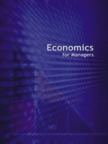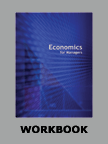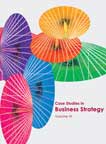The Indian Pharma Industry under the Product Patent Regime
|
|
ICMR HOME | Case Studies Collection
Case Details:
Case Code : BSTR169
Case Length : 26 Pages
Period : 1990-2005
Organization : -
Pub Date : 2005
Teaching Note :Not Available
Countries : India
Industry : Pharmaceutical
To download The Indian Pharma Industry under the Product Patent Regime case study (Case Code:
BSTR169) click on the button below, and select the case from the list of available cases:

OR

Buy With PayPal
|
Price:
For delivery in electronic format: Rs. 700;
For delivery through courier (within India): Rs. 700 + Shipping & Handling Charges extra
» Business Strategy Case Studies
» Case Studies Collection
» Business Strategy Short Case Studies
» View Detailed Pricing Info
» How To Order This Case
» Business Case Studies
» Case Studies by Area
» Case Studies by Industry
» Case Studies by Company
Please note:
This case study was compiled from published sources, and is intended to be used as a basis for class discussion. It is not intended to illustrate either effective or ineffective handling of a management situation. Nor is it a primary information source.
Chat with us

Please leave your feedback

|
|




<< Previous
Excerpts
Major Pharma Players In India
|
The pharma industry in India was fragmented with top 300 companies accounting
for 85% of sales in value in 2003. The industry has witnessed increased
concentration and leading pharma companies operating in India have witnessed
high growth in sales over the years (Refer Exhibit XIII for data on sales, and
Exhibit XIV for ROCE and ROE for pharma companies operating
in India).
Ranbaxy, the leading pharma company in India, featured among the top 10 generic
companies in the world in 2004. The portfolio of the company included 28 global
brands, which were made available in over 70 countries...
|

|
Outlook
With a number of drugs going off-patent in Europe and US
between 2005 and 2009, Indian pharma companies have plentiful opportunities to
tap these markets. Moreover, the increased share of generics in the US
prescription market (Refer Exhibit XXV (a) XXV (b) and XXV (c)) has opened up
immense opportunities for Indian generic firms...
|
|
Exhibits
Exhibit I: Key Statistics Related to the Pharma
Industry in India (Rs Million)
Exhibit II: Investment Statistics on R&D Projects in the Pharma Industry
Exhibit III: Market Growth Rates of Pharma Segments in 2002-03 and
2003-04
Exhibit IV: Share of Selected Therapeutic Segments in the Indian Pharma
Market in 2003
Exhibit V: Top Ten Pharma Brands in India Based on Retail Sales in 2003
and 2004
Exhibit VI: Health Infrastructure in India In 2003
Exhibit VII: Trends in Market Shares (%) for Pharma Companies: 1998-99
to 2003-04
Exhibit VIII: Pharma Exports and Variance for 2003 and 2004 (April -
September)
Exhibit IX: List of Machinery whose Duties was Reduced as Part Of Budget
2004-05 |
Exhibit X: Duty Structure For Pharma Industry In 2005-06
Exhibit XI: R&D Expenditure Of The Top 10 Indian Pharma Companies As Per Sales
Exhibit XII: Health Expenditures Of Select Countries In 2003
Exhibit XIII: Company-Wise Trends In Sales (Rs Million): 1998-99 To 2003-04
Exhibit XIV: Return On Equity (Roe) And Return On Capital Employed (Roce) For
Pharma Companies Operating In India
Exhibit XV: Ranbaxy Laboratories Ltd
Exhibit XVI: Dr. Reddy's laboratories ltd
Exhibit XVII: Cipla Ltd.
Exhibit XVIII: Wockhardt Ltd.
Exhibit XIX: Matrix Laboratories Ltd.
Exhibit XX: Glaxosmithkline Pharmaceuticals Ltd.
Exhibit XXI: Wyeth Limited
Exhibit XXII: Cadila Healthcare Ltd.
Exhibit XXIII: Biocon Ltd.
Exhibit XXIV: Nicholas Piramal India Ltd.
Exhibit XXV (a): Share Of Generics In The Us Prescription Market In 1984 And
2003
Exhibit XXV (b): Share Of Regions In The Global Generics Market In 2003
Exhibit XXV (c): Share Of Regions In The Global Generics Market In 2004
|










